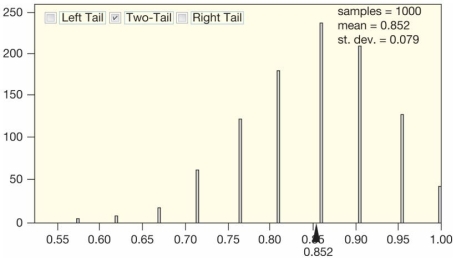True/False
Use the following to answer the following questions:
A study to investigate the dominant paws in cats was described in the scientific journal Animal Behaviour. The researchers used a random sample of 42 domestic cats. In this study, each cat was shown a treat (5 grams of tuna), and while the cat watched, the food was placed inside a jar. The opening of the jar was small enough that the cat could not stick its head inside to remove the treat. The researcher recorded the paw that was first used by the cat to try to retrieve the treat. This was repeated 100 times for each cat (over a span of several days). The paw used most often was deemed the dominant paw (note that one cat used both paws equally and was classified as "ambidextrous"). Of the 42 cats studied, 20 were classified as "left-pawed."
-The researchers were also interested in comparing the proportion of "left-pawed" cats for male and female cats. Of the 21 male cats in the sample, 19 were classified as "left-pawed"
While only 1 of the 21 female cats was considered to be "left-pawed."
A bootstrap distribution (based on 1,000 bootstrap samples) for difference in the proportion of "left-pawed"
Cats is provided. Would it be appropriate to use this bootstrap distribution to construct a confidence interval for the difference in the proportion of male and female cats that are "left-pawed"?
Correct Answer:

Verified
Correct Answer:
Verified
Q90: Use the following to answer the questions
Q91: Use the following to answer the questions
Q92: Use the following to answer the questions
Q93: Use the following to answer the questions
Q94: Use the following to answer the questions
Q96: Use the following to answer the questions
Q97: Use the following to answer the questions
Q98: Use the following to answer the following
Q99: Use the following to answer the
Q100: Use the following to answer the questions